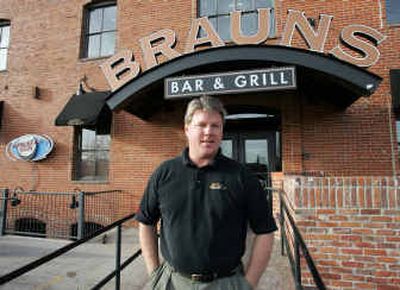In the penalty box

DENVER — Inside a tiny sports apparel store on the 16th Street Mall are racks of jerseys, from the dark blue of the Denver Broncos to the golden tinge of basketball’s hometown Nuggets. Tucked in a back corner are the crimson jerseys of the Colorado Avalanche, largely forgotten in a lost National Hockey League season.
Sales have gone cold since the hometown hockey team stopped playing, Sportsfan manager Chastity Cannon said. Overall business is down by one-fourth and holiday sales were off by half.
“Without hockey, it’s been just a horrible year,” she said. “I’ve noticed that a lot of the hard-core, die-hard fans continue to look, but when there’s no season, we don’t get the new merchandise they’re looking for.”
The dispute that has kept NHL players locked out for 133 days as of Wednesday has meant millions of dollars in losses for stores, restaurants and businesses across North America that rely at least in part on a professional hockey team for their livelihood. Even if the season is saved, few expect a big rebound in business.
Bob Phillips, a salesman for East Side Sporting Goods in suburban Detroit, said sales of Red Wings and other hockey apparel have been “dead.”
“I talked to a competitor and it’s the same thing,” Phillips said. “Obviously, if they’re not playing, they’re not selling.”
At a Sports Authority store in King of Prussia, Pa., just outside Philadelphia, Flyers fans aren’t out looking for hockey jerseys — not with the 76ers and the Super Bowl-bound Eagles holding everyone’s attention.
“I bet we haven’t sold a hockey shirt in two months,” store manager Joe Tarantino said. “They’re not playing. Why are you going to buy a shirt and wear it for nothing?”
The lockout has cost fans and businesses more than 700 of 1,230 regular-season games in 30 U.S. and Canadian cities. It has hit people like Troy Johnston, co-owner of Brauns Bar and Grill, a long slapshot from the Pepsi Center, home of the Avalanche. In a typical season, the restaurant is packed with 800 to 1,000 patrons on hockey nights.
Johnston has filled some of those nights with holiday parties and other events but crowds vary and he expects a six-figure drop in business by the end of what would have been the NHL season.
“We definitely rely on events that happen next door because you’ve got a large, captive audience,” he said. “Hockey is a good draw. It rivals the Broncos. … Well, not now.”
U.S. retail sales of NHL merchandise plunged by about 55 percent last year due to the lockout, said Neil Schwartz of West Palm Beach, Fla.-based SportScanInfo, which tracks weekly sales data from sporting goods stores, excluding team-owned and venue stores. Holiday sales were just a quarter of the same period in 2003.
The four most popular NHL categories — jerseys, headwear, T-shirts and sweatshirts — totaled $64.4 million in calendar year 2004 — a sharp drop from $140 million in 2003, he said.
Many believe the NHL will face a difficult campaign to win back U.S. fans, who have been fairly quiet during the lockout compared with the outcry during the baseball strike in 1994-95.